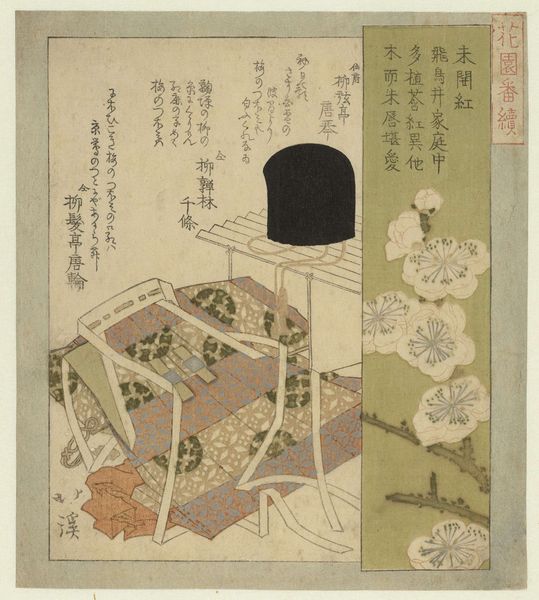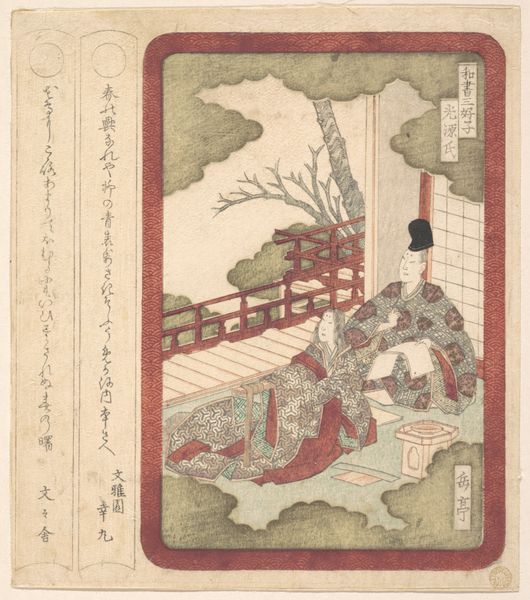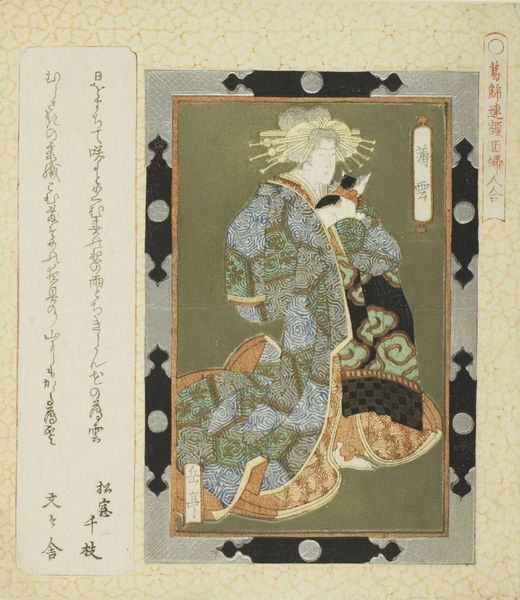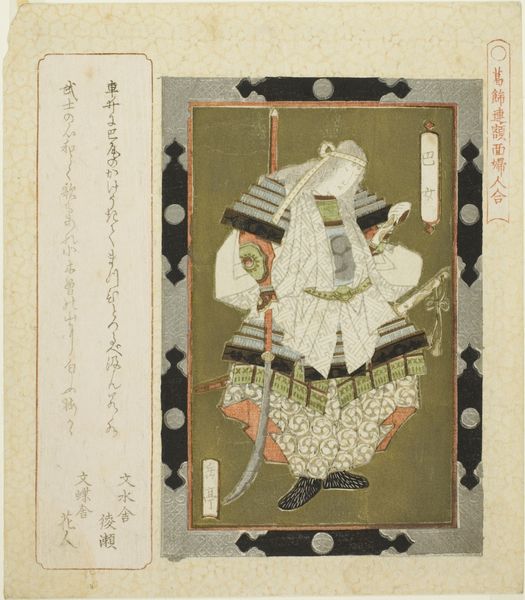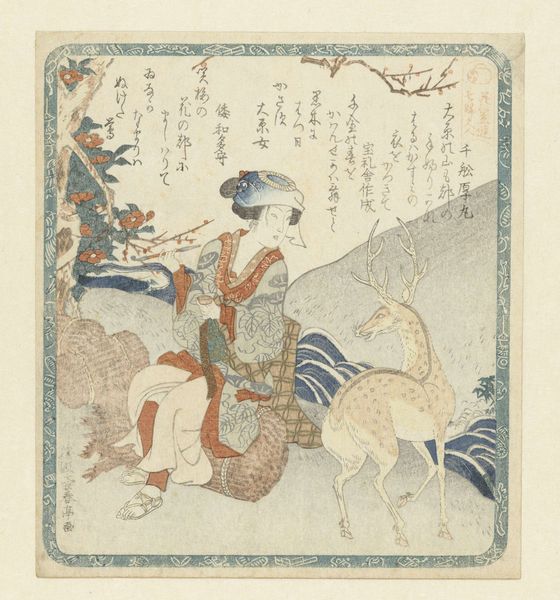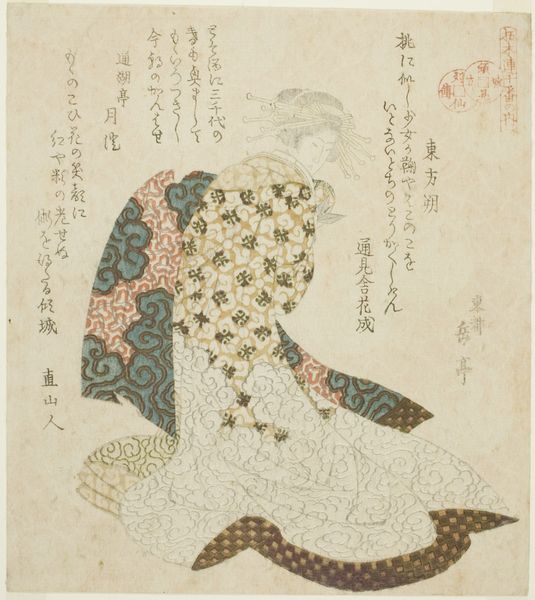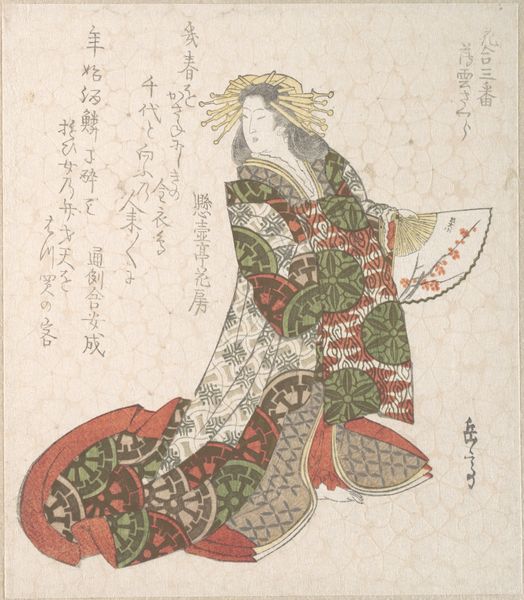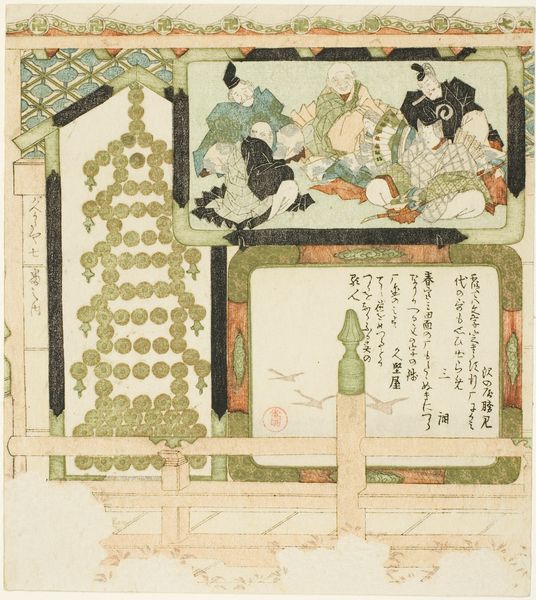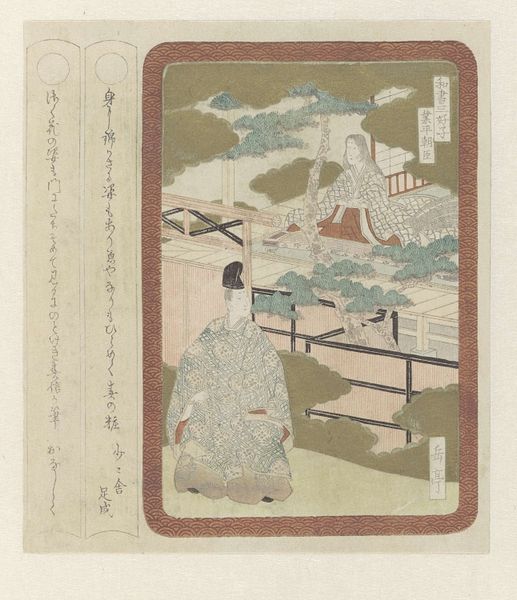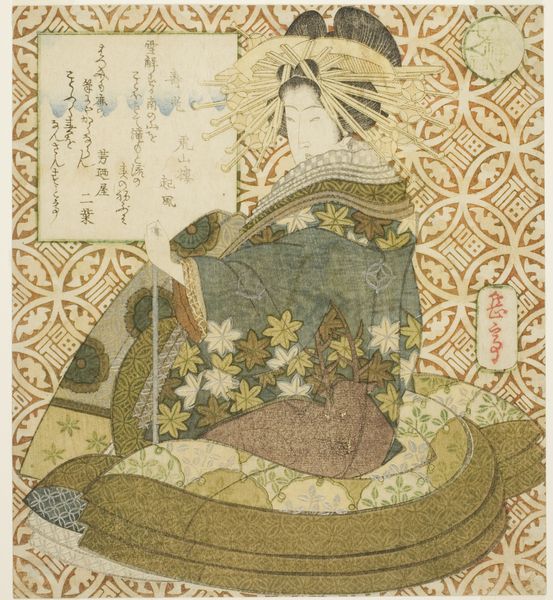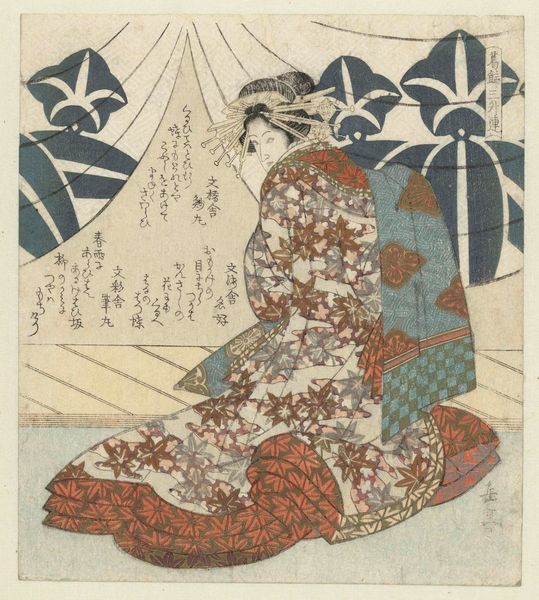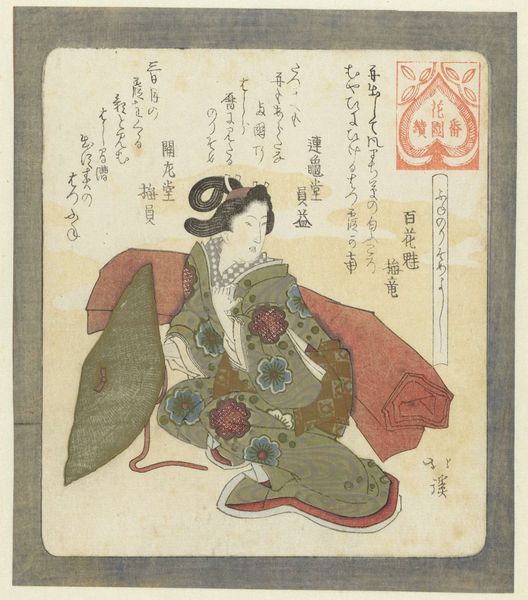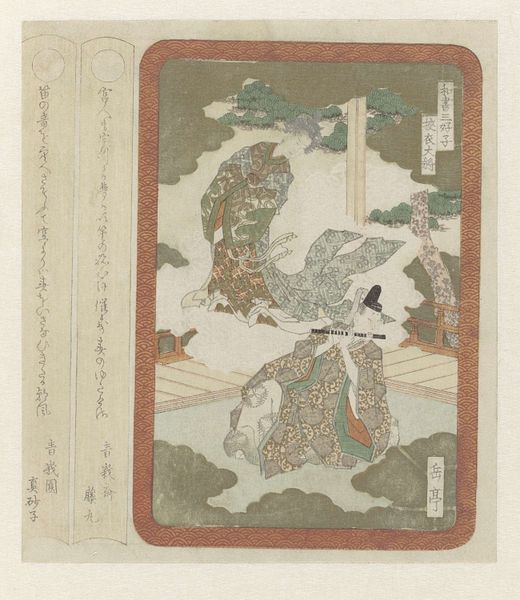
Kogo no Tsubone, from the series "Framed Pictures of Women for the Katsushika Circle (Katsushikaren gakumen fujin awase)" c. 1822
0:00
0:00
drawing, print, paper
#
drawing
#
narrative-art
# print
#
asian-art
#
ukiyo-e
#
figuration
#
paper
#
orientalism
Dimensions: 21.7 × 19.2 cm
Copyright: Public Domain
Curator: Here we have a print by Yashima Gakutei from around 1822, titled "Kogo no Tsubone, from the series 'Framed Pictures of Women for the Katsushika Circle.'" Editor: The muted colors give it a contemplative feel. It’s intriguing, almost as if the subject is lost in thought or absorbed in music. Curator: Indeed. Gakutei's print depicts Kogo no Tsubone, a lady-in-waiting known for her musical talents. Notice the koto; its precise rendering indicates not just skill, but an understanding of musical instrument production and use within elite social circles of the Edo period. The print itself, a commercial object, relies on skilled woodblock carvers and printers for its existence, linking the artist to a broader network of craftspeople. Editor: And Kogo herself carries a rich cultural load. The koto represents not just musical skill but refinement, status, and emotional expression. Note how she's looking down, her posture suggesting humility but perhaps also a hidden depth of emotion that she expresses through her music. She embodies a certain idealized femininity. Curator: The materiality is vital here, too. The choice of woodblock printing allowed for wider dissemination. Ukiyo-e prints became accessible luxury goods that reflect broader cultural consumption. The paper itself speaks to a material culture valuing delicate craft and skillful production. Editor: The frame within the image is quite fascinating, too. It draws your attention inward to Kogo’s space. Symbolically, the surrounding patterned border could reflect confinement or protection depending on one’s interpretation. It definitely intensifies the feeling that we're observers, peeking into a moment of private artistry. Curator: Yes, consider how the creation and distribution of these prints supported entire communities of artisans and merchants. Each impression a small commodity, carefully crafted and circulated within the marketplace of ideas and aesthetics. Editor: The symbolism here, combined with the artistry, grants Kogo a near mythical status. It immortalizes this musician while showcasing both her elegance and talent, resonating with enduring values. Curator: Looking at this, one can see how ukiyo-e prints represent a fusion of artistic expression, skilled labor, and commercial viability during the Edo period. Editor: A delicate interplay of image, emotion, and enduring representation that reveals much.
Comments
No comments
Be the first to comment and join the conversation on the ultimate creative platform.
